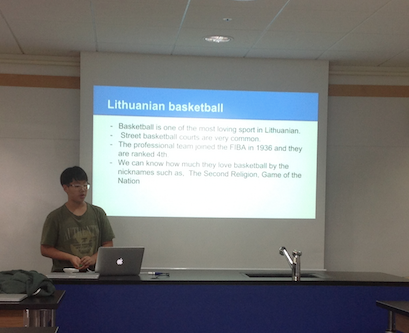|
6/19/2015 1 Comment Participation in RecreationI have recently finished a unit on 'Participation in Recreation'. The task was for the students to choose a country, then a recreational activity that is fairly popular in that country. They had to research that recreation and discuss any factors that influenced participation. It sounds daunting but we did have a few lessons discussing these factors. In Physical and Health Education in our school we are trying to cover social, psychological, emotional and physical factors which affect health. So in sixth grade I decided I wanted to focus on participation in recreation. I thought this would be a good area to look as I wanted the kids to understand how important leisure and recreation time was. We first started by discussing what Leisure was and how it has changed over time. We discussed what leisure time my students have and what they did in this time. We then called that activity 'Recreation'. We also found that many of my students did not have much recreational time as they used their 'free' time to attend Hagwons (Academies) or study with tutors. I thought is was important that students had an understanding of what recreation was and as we are an international school, what recreation around he world is. So we discussed factors and influences of participation in recreation such as political influences, financial influences, peer pressure, etc. One thing I wanted, was for the students to choose individual countries. Some did find this hard as we went along through the classes as there were less counties to choose. It was then up to the students to do the research during class time and at home on a recreational activity of their choice in that country. They would research a little about what the activity involved and then any factors and influences which affected the activity within that country. Some of the students struggled with this as they either were not used to doing research and having this amount of freedom, or they did not follow directions, or did not seek help when they needed it. Some students flourished with this activity and came up with some very good presentations. My aim was to assess them through Criterion A - Knowing and Understanding but I wanted to assess their verbal presentation and not the content on their powerpoint. I decided I would sit their and write notes whilst they presented, which helped so much as with previous criterion A assessments the amount time was spent marking afterwards was ridiculous. The students then had a quick question and answer session to draw out more information from them. Other students in the class would ask them questions based on what was expected from the presentation. I found this part particularly valuable to not only the student presenting but the students asking questions. They then knew when it was their turn, what was coming up.
One thing I did find was that the presentations took far longer than I had anticipated. I had a time limit for each person, but sometimes we just got into it too much. There are some things I would change with this next year but allowing the students to have the freedom to research and present in their own way was refreshing. How have you assessed knowledge in physical education? Do you always do written assessments? How much time does it take you to mark?
1 Comment
10/11/2022 01:30:30 am
hanks for sharing the article, and more importantly, your personal experience mindfully using our emotions as data about our inner state and knowing when it’s better to de-escalate by taking a time out are great tools. Appreciate you reading and sharing your story since I can certainly relate and I think others can to
Reply
Leave a Reply. |
Archives
May 2020
AuthorI have been writing for nearly five years on and off in the world of twitter, facebook groups, blogging and sharing ideas thoughts with the wider physical education world. Categories |
|
email: [email protected]
|
Twitter: @Dalais44
|
Linked-In: Dominique Dalais
|



 RSS Feed
RSS Feed